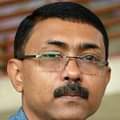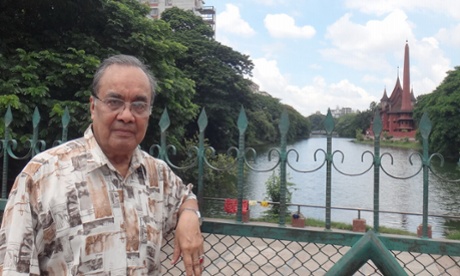
My name is Ershad Ahmed. I retired in 1994 after spending 27 years working in government. I started my photo blog, Dhakadailyphoto, eight years ago. I have been living in Eskaton, a residential neighbourhood in Dhaka, for 20 years. It intersects a stretch of the VIP road that connects two landmarks of Bangladesh’s capital: the Shahbag Square and the Pan Pacific Sonargaon Hotel.
People in the neighbourhood are friendly and cooperative. A lot of businesses have moved here recently, taking advantage of its central location. During the World Cup, locals supported the two South American soccer giants, Brazil and Argentina: their flags fluttered in most houses throughout the tournament.
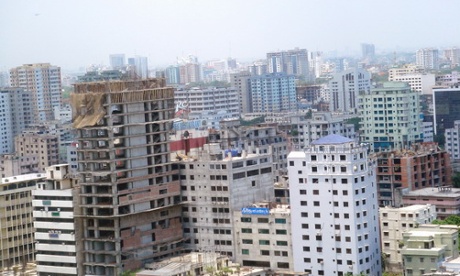
Dhaka is a bustling megacity with 15 million people living in a 325 sq km area. It is one of the densest cities in the world: its population has grown more than a hundred times since the independence of Bangladesh in 1971. It is the political, educational, commercial and industrial epicentre of Bangladesh.
Dhaka has gone through waves of growth and decay, from sporadic settlements in the 10th century to a Mughal provincial capital in the 17th century. It has been famous for its muslin and jute production. Virtually surrounded by three large rivers, it is the last major urban stop on the great Gangetic stream as it cascades into the sea. The lowest part of the city is a little more than two meters above sea level, putting residents at risk of constant flooding. Rising living costs and population levels are its major problems.
How clean is the city?
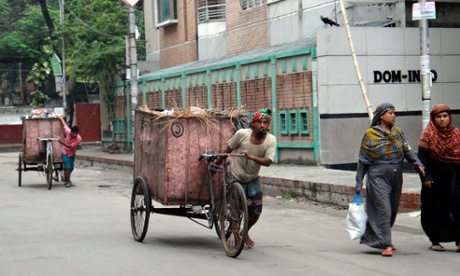
Dhaka is divided into two zones – Dhaka North and Dhaka South – in order to help manage public services like waste disposal and law enforcement. The Dhaka North area is generally better planned and has plenty of green areas and water bodies. The roads are wide and rubbish bins emptied regularly. Dhaka South, including Old Dhaka, is not maintained well. The clogged sewage drains, road-side garbage dumps and unplanned industrial waste management pose severe health hazards. Clogged surface drains are a breeding ground for mosquitoes. The sewage treatment plants on the city outskirts throw treated waste into the river Buriganga, polluting its water. To drink water, residents have to buy it bottled or boil it at home.
What does your city sound like?
Being an overcrowded city, Dhaka has high levels of noise pollution. You can often hear honking from vehicles in the streets, due to reckless driving and overtaking. Honking is considered a normal practice. It is also common to hear noises from construction, street workshops and loudspeakers in shops and restaurants. Peddler calls are a common sound, too, as they sell vegetables and household products door-to-door.
Dhaka is known as the city of mosques, and the prayer call of Azaan is another unique sound that fills the city air from time to time.
What one thing is indispensable for life in your city?
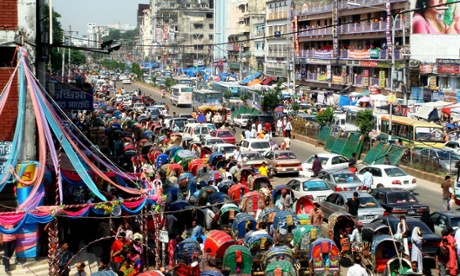
The road networks in Dhaka are inadequate, with only 7% of space dedicated to paved roads. The low to middle income group constitute 90% of the city’s population. They live in the denser part of the city where the streets are narrow and often wind into dead ends. This means rickshaws have become popular here. The rickshaws are covered in art depicting Bangladeshi rituals, traditions, cinema and other folklore. To some extent, the existence of these rickshaws reflects the true nature of our socio-economic condition.
What’s the best way to get around?
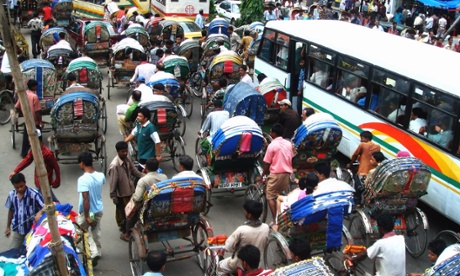
Dhaka has almost half a million rickshaws in its streets. They are everywhere, especially in the old city, where one finds the old forts, caravanserai, mosques and palaces of the Nawabs standing witness to a time that is fast giving way to modernity.
The CNG – compression natural gas – tricycle, also known as the “baby taxi”, is a good alternative as it is fast and spacious. Taxi cabs are few and far between and only available in the new parts of the city and commercial areas. They are used mainly for long trips out of the city. State and private buses remain overcrowded and run on specific routes connecting important junctions. Recently, more people are travelling by bicycle to get around traffic congestion.
What’s the best place for a conversation?
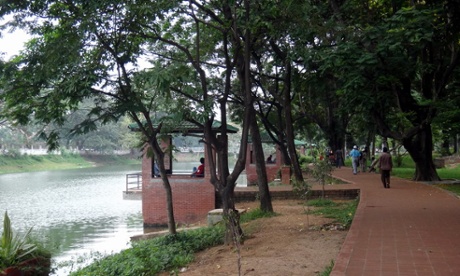
Dhanmondi Lake is a popular hangout, especially for younger crowds, with its restaurants and boating opportunities. The lake, located in the middle of the city, was once part of a network of canals during the Mughal times. The long serpentine lake has been adorned with foot bridges, jogging tracks, pedal boats and benches. Some residences of Dhanmondi are built on the water’s edge – one of these is a boat-shaped house.
There is an open-air amphitheatre on the banks of the lake called Rabindra-Sarobar, which is a great venue for concerts, theatrical performances and a variety of cultural and religious festivities. Large crowds gather by the lake during Independence Day, Eid and Bengali New Year festivals, adding vibrant colour to its placid emerald-green waters.
What is the best building?
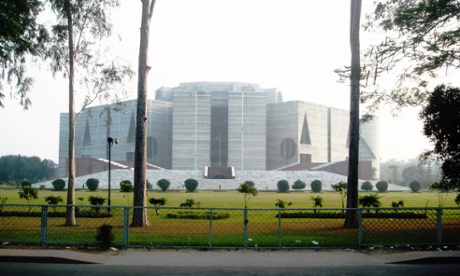
The parliament building in Sher-e-Bangla Nagar is arguably one of the most magnificent 20th-century architectural monuments in the world. Renowned architect Louis I. Kahn was commissioned to design the building in 1961 in Bangladesh (then East Pakistan). Finally completed in 1982 it was a symbol of democracy for a newly independent Bangladesh.
Known as Kahn’s greatest project, the building manifests the spirit of the newborn country through its symmetry and juxtaposition of magnificent geometric shapes and forms floating on water. Its concentric passageway symbolises the guided, ritualised walk of the common man towards the sacred inner sanctum of the democratic parliament hall. Kahn’s fascination with capturing ever-changing daylight and its psychological and metaphysical significance are clear in the grandeur of his designs. As the most striking element of Dhaka city, it is a major tourist attraction and an important site to visit for the local people.
What is the worst building?
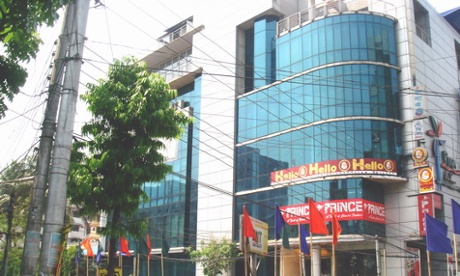
Dhaka’s multistorey shopping centres are its worst structures. Most of these are enclosed, unappealing glass boxes with no respect for the surrounding urban context. They display very poor planning with narrow passageways, unsuitable for large crowds, and fail to comply with building regulations in terms of parking and fire safety.
Due to lack of urban public places, the air-conditioned, multistorey retail markets with escalators and cafes were initially welcomed by the people of Dhaka. They became hubs for social interaction and recreation. Unfortunately, their design hardly made allowances for such public interaction. Most of them do not provide enough parking areas as required by building rules. Those that have basement parking are poorly designed. With every newly constructed mall, the city becomes burdened with more parking and traffic issues.
Are you optimistic about your city’s future?
Dhaka is an uncontrolled and unplanned urban sprawl. Except for a few main artery roads and some small posh areas, the city consists of urban slums detrimental to the healthy growth of society. Dhaka was a district town until 1947 and a provincial capital until 1971. Very little effective effort went into the planned growth of the metropolis. No proper law exists for planning, and many buildings are put up indiscriminately for the benefit of individuals at the expense of the community. These conditions have brought about the present chaotic state of the city.
However, I am hopeful that Dhaka can still be transformed. We can take advantage of the river, canals, lowlands and the richness of the soil for the growth of trees and plants. There is a pride in our historic capital city and public awareness of its worth is growing – albeit slowly.
Source: The Gurdian

